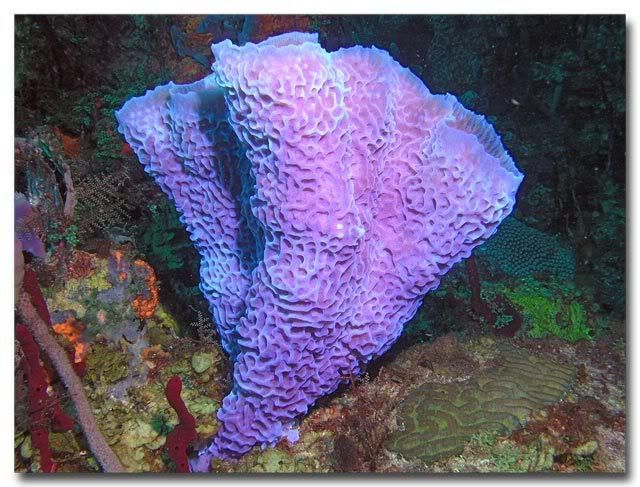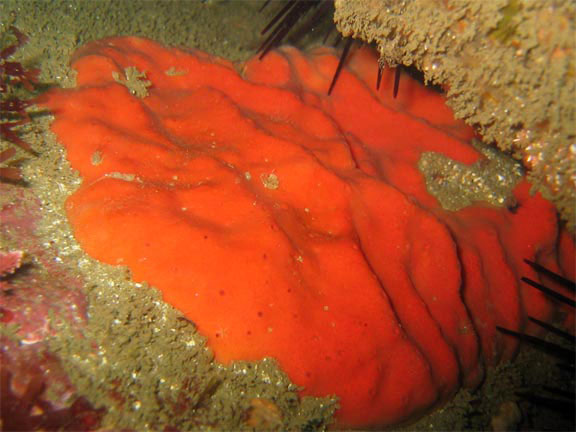A Sponges body is unique in that it is built around a system of water canals because of the sponged sessile lifestyle. Their bodies are full of tiny holes, or pores called ostia through which large amounts of water circulate.
Because sponges feed on material that is suspended in seawater, they are called suspension feeders or filter feeders because they filter their food from the water.
Sponges can reproduce both sexually and asexually. Asexual reproduction can either be budding or fragmentation.
Although they are simple sessile animals, sponges interact with other marine organisms in several ways. They compete for space. They are links in some marine food chains. Sponges form many symbiotic relationships and they provide habitat for other animals.
Cnidarians are a group of animals that consist of hydroids, corals, sea anemones and jellyfish.
Cnidarians have bodies that exhibit radial symmetry . This means that many planes can be drawn through the central axis that will divide the animal into two equivalent halves.
Cnidarians can reproduce both sexually and asexually.
One of the most important features of cnidarians is their stinging cells(cnidocytes). The stinging cell contains a stinging organelle called cnida. 
Many species of cnidarian such as the Portugese man-of-war can cause painful stings.
The stings of a box jellyfish can be fatal
http://www.youtube.com/watch?v=eyCigZ_bsTM Here is video from National Geographic called Jellyfish Invasion!
"Sea" you real soon!




.jpg)
No comments:
Post a Comment